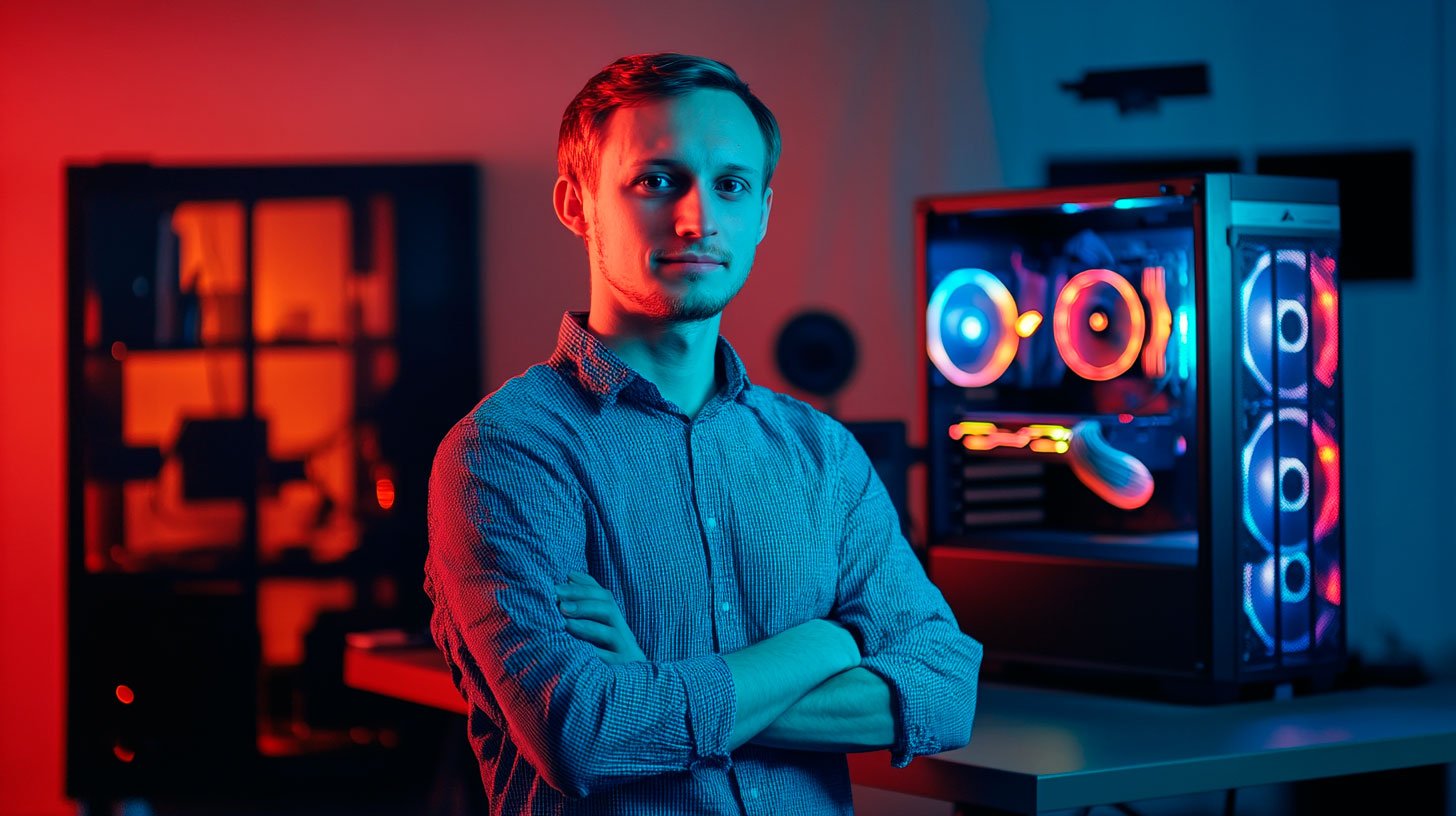Tech Trends
Alexander Ostrovskiy: Systems for Bioinformatics

In a sterile assessment office settled inside the focal point of Silicon Valley, Dr. Elena Rodriguez peers energetically at a PC screen. The screen streaks with a perplexing presentation of letters—A—AA, T, C, and G—g—getting across the show in obviously huge mixes. To the lacking eye, it’s an unlimited code. Anyway, to Dr. Rodriguez, a head bioinformatician at the state-of–of-the art BioTech Plans, it’s the language of life itself. Portrayed by Alexander Ostrovskiy.
Welcome to the universe of bioinformatics, where science meets massive information and where strong PC frameworks are interpreting the secrets of life for life for each individual byte.
The DNA Data Deluge
It’s been more than a long time since James Watson and Francis Issue at first depicted the twofold helix improvement of DNA;; at this point, we’re essentially now starting to relax its intricacies genuinely. By the ethicality of quick developments in DNA sequencing improvement, we can now examine the hereditary code quicker and more reasonably than any time in continuous memory.
“It’s like we’ve been given the book of life,” says Dr. Rodriguez, her eyes shining with power. “Regardless, it’s written in a language we’re truly figuring out a viable method for getting a handle on.”
Besides, what a book it is. The human genome alone contains around 3 billion base matches. Whenever printed, it would fill 200 500-page telephone libraries. At this point, duplicate that in huge amounts of species on the planet, and you start to figure out the sheer size of hereditary information we’re making due.
“We’re stifling in information,” giggles Dr. Marcus Chen, a frameworks coordinator at BioTech Strategies. “Regardless, it’s a fair issue to have. The test right currently is figuring out everything.”
Enter bioinformatics—the examination of getting together and dismantling complex customary information like hereditary codes, cell population groups, or protein groupings. A field’s detonating in significance, sitting at the mix of science, PC programming, and gigantic information evaluation.
The Silicon Biology Lab
As of now, ordinary examination was generally restricted to wet labs—spots of test tubes, petri dishes, and enhancing points of convergence. Anyway, today, logically, the most imperative disclosures are going on in silicon—strong PC frameworks crunching immense extents of ordinary information.
At the focal point of these designs are common execution workstations, routinely gathered to shape supercomputers arranged for performing trillions of estimations each second. These machines are the workhorses of bioinformatics, enthusiastically filtering through loads of acquired information to track down models and experiences that would be totally unimaginable so that people could see alone.
“It’s like searching for an inconceivably interesting, not entirely obvious detail,” Dr. Chen sorts out. “Nonetheless, the pile is the size of a planet, and we’re not normally unambiguous about what the needle resembles. That is where recreated knowledge comes in.”
Without a doubt, man-made thinking and computerized reasoning calculations are turning out to be constantly fundamental in bioinformatics. These amazing endeavors can see straightforward models in hereditary information, expect protein plans, and even recommend potential medication habitats for illnesses.
From bytes to breakthroughs
The effect of bioinformatics is being felt across the extent of life sciences. In medication, it’s, in a general sense, changing the way that we get it and treat disorders. By isolating the acquired profiles of improvements, for example, oncologists can now fit infection medications to individual patients, introducing the hour of altered solution.
“We’re creating some distance from the one-size-fits-all strategy for overseeing clinical thought,” says Dr. Sarah Goldstein, an oncologist at Festivity Sloan Kettering Ailment Center. “By the ethicality of bioinformatics, we can now take a gander at a patient’s acquired magnificent care items and foresee which medications are probably going to make genuine progress. It’s saving lives.”
By the way, the motivations behind bioinformatics interface very far past human success. In developing, it’s being utilized to empower more grounded harvests and animals. Regular experts are utilizing it to follow biodiversity and anticipate the effects of biological change on natural structures. Beyond a shadow of a doubt, even in fields like genuine sciences and humanities, bioinformatics contraptions are offering better ways of managing response down DNA affirmation and studying human new development.
The Hardware of Life Science
So what precisely goes into a bioinformatics structure? At its center, it’s not so comparable to the PC you would have at home—essentially considerably more incredible.
“We really need three things,” Dr. Chen makes heads or tails of, ticking off on his fingers. “Managing power, amassing, and systems association.”
The managing power comes from five-star execution central processors and, consistently, GPUs (Plans Dealing with Units). At previously anticipated computer games, GPUs have tracked down a second life in sound enrolling because of their capacity to in the meantime play out different computations.
Limit is moreover basic. A solitary human genome social occasion can take up to 200 gigabytes of room. Duplicate that by uncommon various patients in an ordinary report, and you’re rapidly into the space of petabytes (a colossal number of gigabytes).
“We’re discussing how to develop the size of football fields,” Dr. Chen says. “We’re truly running out of space!”
At last, there’s organizing. In the space of bioinformatics, effort is essential. Researchers from one side of the world to the other are reliably sharing information and results, solid areas for requiring speedy relationships to move these huge datasets around.
The Software of Life
Anyway, gear is basically around half of the story. The authentic divination of bioinformatics occurs in the thing—the bewildering assessments and adventures that different the information and concentrate enormous experiences.
There’s a confounding gathering of instruments open, each particular for various errands. Some, similar to Impact (Key Nearby Game-Plan Search Instrument), are utilized to think about natural groupings and track down similarities. Others, such as GATK (Genome Evaluation Gadget Stash), are utilized to see intrinsic groupings that may be related to illnesses.
“It seems to be a Swiss-prepared power edge,” Dr. Rodriguez says. “We have different mechanical congregations for various positions. The capacity is in recognising which device to utilize when.”
Coherently, these contraptions are being stretched out by man-made thinking. PC-based knowledge calculations can recognise plans in information that people could miss, inciting new disclosures and experiences.
“Man-made intellectual prowess isn’t supplanting human-trained professionals,” Dr. Rodriguez rushes to figure out. “It’s increasing our capacities. We’re addressing the solicitations and deciphering the outcomes. The mirrored information is simply assisting us with appearing quicker.”
The Human Element
Regardless of the ongoing visit about silicon and composing PC programs, it’s significant that, at its heart, bioinformatics is a fundamentally human undertaking. Behind each PC and calculation is an individual driven by interest in the central idea of life.
Take Dr. Rodriguez. Experiencing youth in a certified neighborhood in New Mexico, she never envisioned she’d one day be at the front of a rational disturbance. “I cherished science and I cherished PCs,” she studies with a chuckle. “I essentially never recognised there was a field that joined both!”
The Future of Life Science
These are journeys of sumptuous yet confirmed potential outcomes that experts are effectively pursuing. As how we would translate the hereditary code makes and our computational contraptions encourage more current, we’re entering another district in our capacity to analyze, disentangle, and even control the book of life. Relationship with site page: https://pc-ostrovskiy-alexander.co.uk/blog
Stay connected with Ms. Magazine for the latest empowering insights and updates that are worth your attention!






